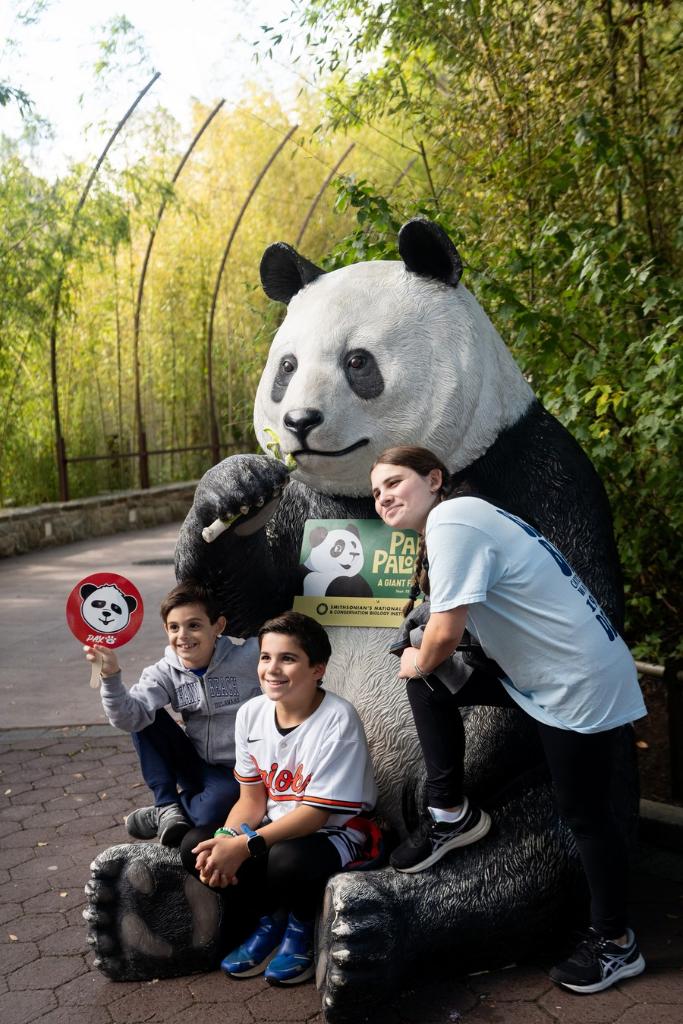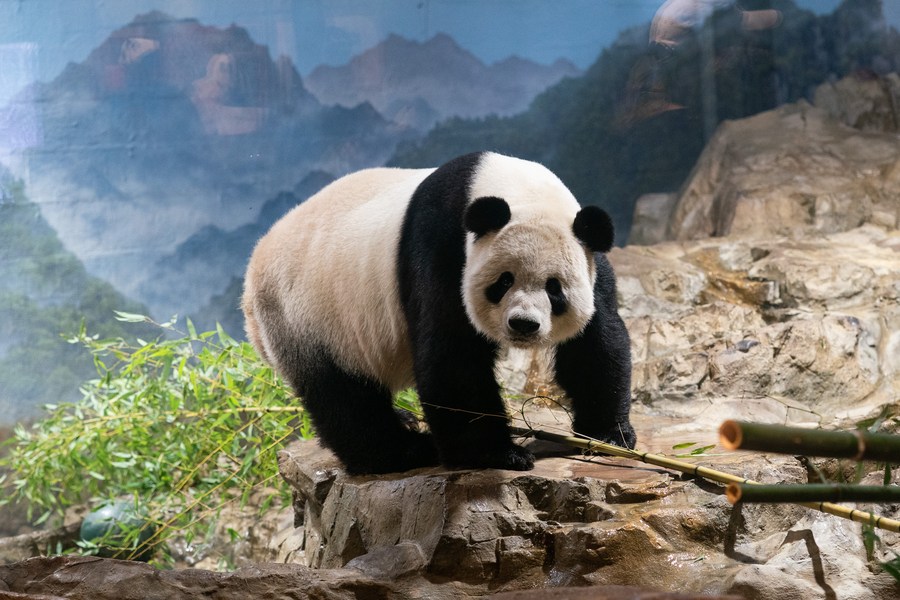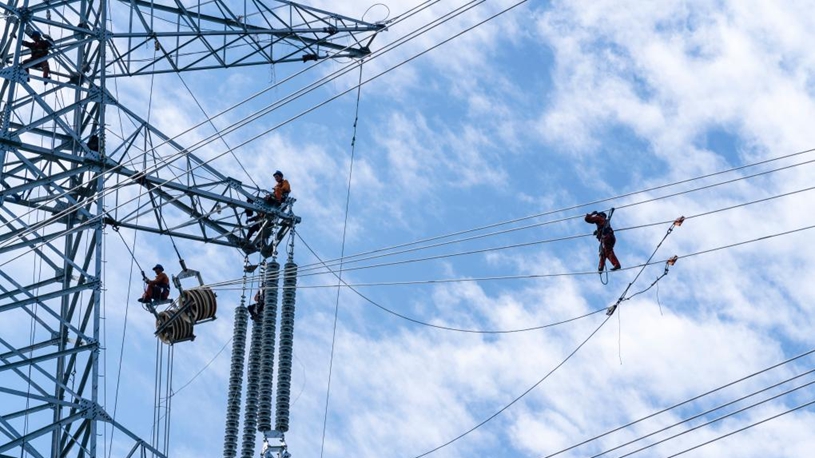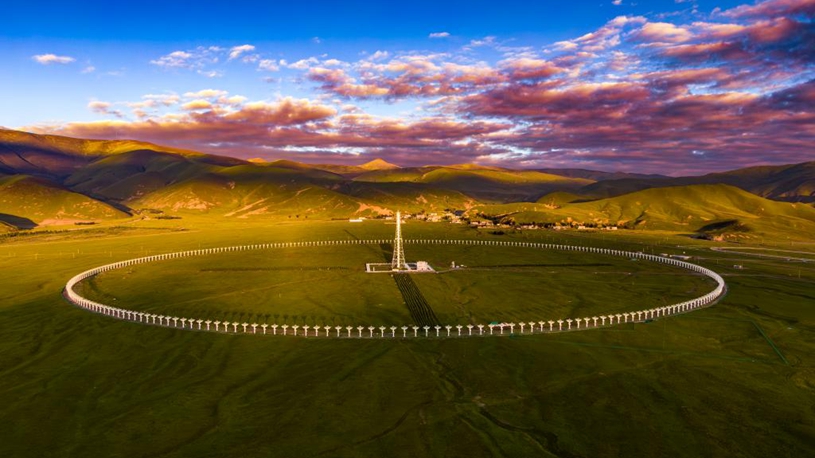Video: Despite the autumn chill on the early morning of Sept. 30, 2023, Washingtonians and visitors from across the United States flocked to the Smithsonian's National Zoo in the nation's capital, seizing what would perhaps be their last chance to see the three giant pandas which are to leave for China later this year. (Xinhua)
Pandas "are always just like a great symbol of bridge" between the United States and China, and maintaining a friendly relationship based on common appreciation for pandas "is always a positive thing" for the two countries.
by Xinhua writers Deng Xianlai and Xu Yuan
WASHINGTON, Oct. 1 (Xinhua) -- Despite the autumn chill on an early Saturday morning, Washingtonians and visitors from across the United States flocked to the Smithsonian's National Zoo in the nation's capital, seizing what would perhaps be their last chance to see the three giant pandas which are to leave for China later this year.

Visitors pose for photos with a giant panda statue at the Smithsonian's National Zoo in Washington, D.C., the United States, Sept. 30, 2023. (Xinhua/Liu Jie)
CHILDREN'S LOVE
"We are just happy that she got to see the pandas before they leave," a stay-at-home mom who gave her name as Sharla said of her 18-month-old baby girl, whom she held in her arms while expecting panda cub Xiao Qi Ji, his mom Mei Xiang and dad Tian Tian to emerge from the panda house and greet the visitors.
Sharla said her daughter had a panda blanket when she was little and always considered her panda stuffed animal her favorite toy.
"So we wanted to make sure she could see a real panda," said Sharla, who took her daughter here to see the pandas just a few weeks ago, making Saturday's trip to the zoo "her second time seeing the pandas."
Honoring its agreement with the China Wildlife Conservation Association (CWCA), the Smithsonian's National Zoo and Conservation Biology Institute will send Xiao Qi Ji, who was born at the zoo three years ago, and his mom and dad back to China by early December.
To celebrate the joy the pandas have brought to the American people and say goodbye to them, the zoo held a "giant farewell" event during the week ending Saturday.
Over the entire week, the event has attracted avid panda lovers to come over. They gathered behind the fences surrounding the outdoor yard or queued up in lines, all to see the cute bears with their own eyes.
During the morning hours on Saturday, Tian Tian walked out of his house and stayed for a brief time on the outdoor ground, while Xiao Qi Ji remained in his own house, preferring to take a nap instead. The male cub was seen leaning on the rockery, turning his back to his admirers and stretching his legs from time to time.
"She'd love to give the panda a hug if she could because she loves them," Sharla said when asked how her baby girl wanted to say goodbye to the pandas.
Shannon, a climate change researcher who also only gave her first name, brought her four-year-old girl to the zoo to say goodbye to the pandas. Her family traveled to Washington from Pittsburgh, Pennsylvania, for a wedding, staying in town for just a couple of days.
"We found out it was the farewell weekend for the pandas, so we thought we've got to try and get tickets," Shannon said, adding that her daughter was very excited and "it's worth the travel."
Noting that Washington is one of the few places in the United States that still have pandas, Shannon said: "It is kind of sad to see them go for sure."

Giant panda Xiao Qi Ji is seen at the Smithsonian's National Zoo in Washington, D.C., the United States, Sept. 30, 2023. (Xinhua/Liu Jie)
"LITTLE MIRACLE"
The whole team of veterinarians and researchers alike who for years have taken good care of the three pandas at the zoo, also feel upset about having to bid farewell to the bears, whom they consider to be their own children.
Pamela Baker-Masson, director of communications at the zoo who has worked with the panda team for 17 years, said that all the pandas are currently in great shape, something the zoo's staff have been constantly making sure of as they prepare for the pandas' return to China.
No matter how well prepared her colleagues are for the pandas' upcoming long journey, Baker-Masson admitted that the eventual departure "hasn't quite settled on me yet, and I'm going to be quite sad."
"I would just say thank you. You have been a wonderful part of the history of our giant panda program," Baker-Masson said in her presumptive farewell remarks to the three pandas. "You will always be part of our history and in our hearts."
Since arriving in Washington in 2000, Mei Xiang and Tian Tian have had four cubs, three of which have already gone back to China. The fourth one, Xiao Qi Ji, has become the most loved inhabitant of the zoo since his birth on Aug. 21, 2020.
Meaning "little miracle" in English, Xiao Qi Ji's name was to mark his miraculous coming into the world, not only because it was during the coronavirus pandemic when people were generally in low spirit, but also because Mei Xiang, 22 years old then, was thought by many experts as being "practically post-reproductive" based on data available at the time.
"As Mei Xiang and Tian Tian have aged, we've learned more about how to care for older pandas," Baker-Masson said, adding that the experiences gained, including those resulting from Xiao Qi Ji's birth, are a testament to the passion and cooperative spirit shown by panda experts from both the United States and China.
"I think what this means is that even during the pandemic, you still have vital exchange and success," she said.

Giant panda Tian Tian is seen at the Smithsonian's National Zoo in Washington, D.C., the United States, Sept. 30, 2023. (Xinhua/Liu Jie)
COLLABORATION ON PANDA CONSERVATION
Collaboration between China and the United States on panda conservation dates back to 51 years ago when the first panda pair that the Chinese government sent to the United States -- Ling Ling and Hsing Hsing -- arrived in the Smithsonian's National Zoo.
Baker-Masson described the collaboration as "hand in glove," saying the U.S. side found it "incredibly fortunate to have such a good partner with CWCA. They are remarkable."
"When you are with your peers and you are really good at what you do, it's just a dynamic exchange," she said, adding that Chinese and American experts help each other because they always aim "higher" in their dedication to the shared mission of preserving the panda species.
Calling pandas "the best ambassadors" and "the perfect symbol" representing the U.S.-China friendship, Baker-Masson said the work of preserving pandas and other wildlife transcends political differences between countries. "It's about the future of our planet and our habitat."
The current agreement guiding the cooperation on panda conservation and research between the Smithsonian's National Zoo and CWCA is set to expire on Dec. 7. Baker-Masson said her zoo is "in the process of applying for the next memorandum of understanding" with its Chinese counterpart.
"There is no other conservation program that has lasted 51 years with this much success. It takes so many people working together, and that's why we can be proud today," Baker-Masson said.
"We are fully committed to this species. We want another 50 years without a doubt," she added.
"China engages in giant panda conservation and research cooperation with many countries. The purpose is to better protect endangered species and promote global biodiversity conservation," Chinese Foreign Ministry Spokesperson Mao Ning said during a press briefing in Beijing on Thursday. "We stand ready to continue our work with cooperation partners, including the U.S., to enhance cooperation on conservation of endangered species."
Sharla said pandas "are always just like a great symbol of bridge" between the United States and China, and maintaining a friendly relationship based on common appreciation for pandas "is always a positive thing" for the two countries. ■












